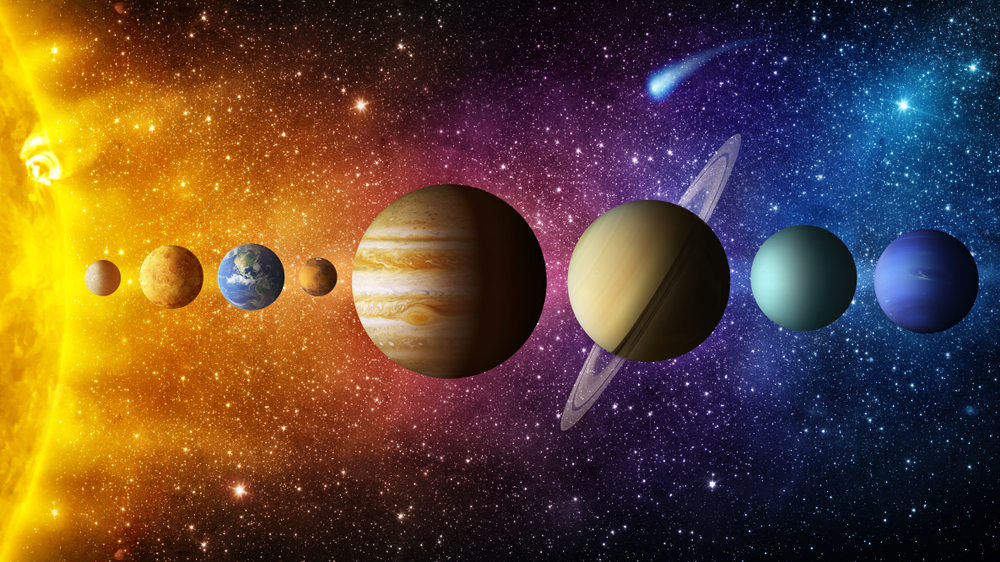The vast expanse of our solar system is filled with awe-inspiring celestial wonders. As we set off on an extraordinary voyage across the planets, we’re entering a universe of amazing beauty and scientific intrigue. Join us as we uncover the splendor that lies within our cosmic vicinity.

The first stop on our space expedition is Mercury, our Sun’s nearest neighbor. Its landscape, while starkly empty, is pockmarked with craters, each a storyteller of an ancient, violent history. Mercury’s closeness to the Sun leads to extreme temperature fluctuations, creating an environment that’s both infernally hot and bone-chillingly cold.
Onward to Venus, a planet sometimes called Earth’s twin due to its similar size and mass. However, beneath its dense atmosphere of carbon dioxide lies a severe greenhouse effect, leading to scorching temperatures and a surface clad in acid-filled clouds. Still, Venus shines brilliantly in the sky due to its sunlight-reflective cloud-cover, appearing as a jewel against the darkness of space.
Our own Earth is the next landmark on this tour, a blue oasis brimming with life. Our world boasts verdant forests, vast seas, and an abundance of species. Earth’s atmosphere provides a protective layer that nourishes life, and its varied landscapes present an awe-inspiring array of natural artistry.
Advancing to Mars, the fascination with this ‘Red Planet’ is undeniable. Its iron oxide-coated surface gives it a unique red hue while its dramatic terrain hints at Mars’ once active geological past. Ongoing missions aim to decipher its secrets, probing for signs of former water reservoirs and the possibility of past life.
Jupiter, the solar system’s behemoth, looms next with its striking clouds and storm systems, including the Great Red Spot, a massive hurricane outlasting any storm known on Earth. The mysteries of its many moons, including the ice-encrusted Europa and volcanic Io, give insight into the solar system’s diverse conditions.
We then glide past Saturn, renowned for its breathtaking rings. These icy and rocky halos create a celestial performance around Saturn, while its moons—like the geologically complex Enceladus—spark fascination with their hidden oceanic depths.
Approaching Uranus, the planet surprises with its extreme axial tilt, appearing to roll along its orbit. Its pale-blue coloring and subdued features invite more exploration to unveil what lies beneath its cold exterior.
Neptune signals the boundary of our planetary journey. This deep blue planet is home to intense atmospheric conditions, with winds unlike any on Earth. Its moon Triton, a dynamic icy body, tantalizes us with its active nitrogen geysers and young surface.
As our planetary odyssey reaches its end, we’re left marveling at the rich tapestry and astounding diversity within our own solar neighborhood. From searing hotscapes to frozen vistas, from raging storms to tranquil skies, these planetary bodies reveal the grandeur and intricacy of the cosmos.
This exploration through our planetary anthology isn’t just a fulfillment of our curiosity; it lights the spark of our desire to know more, and to reach further. It stands as a tribute to our relentless pursuit of understanding and exploration. We must continue to look to the stars, to embark upon the unknown, and to decipher the enigmas waiting in the vast universe—for the marvels of the solar system are merely the opening chapter to an unlimited cosmic journey.







